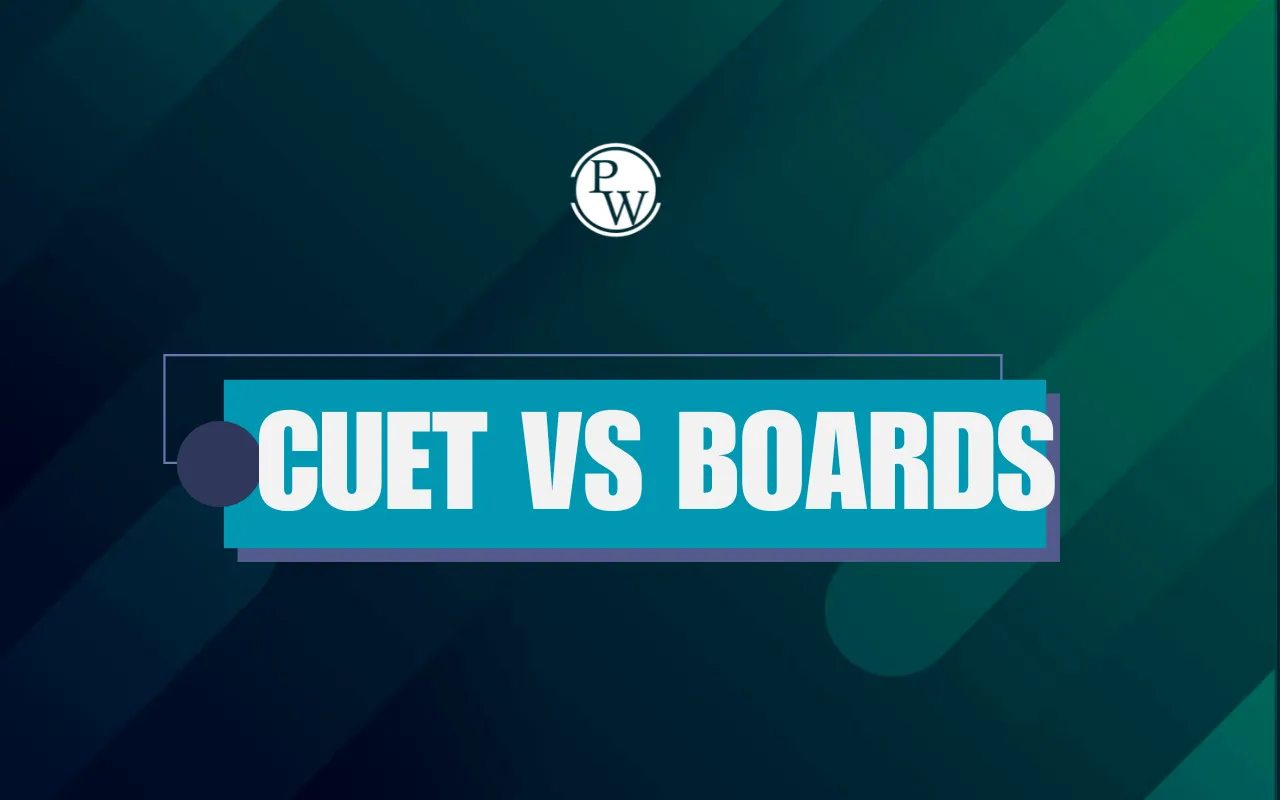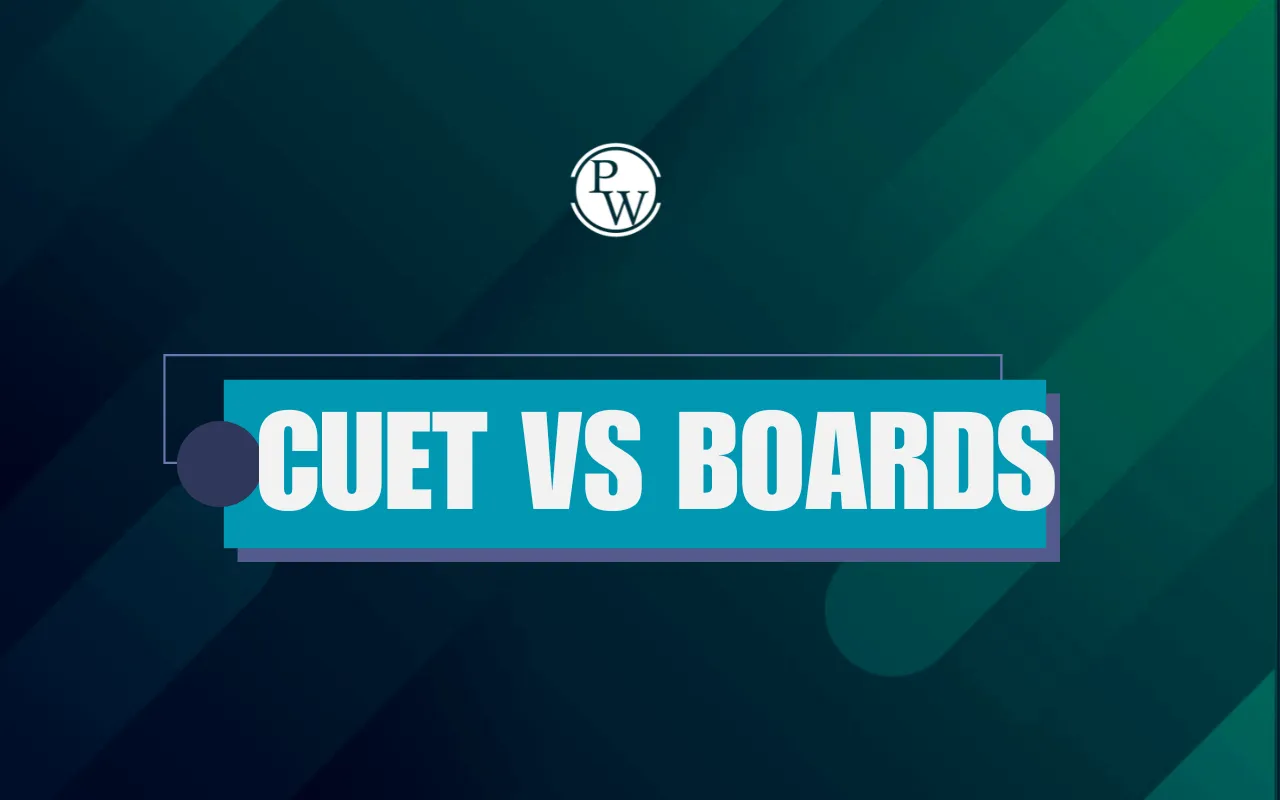

CUET vs Boards are two large exams for Class 12 students. Colleges utilize the CUET exam to choose applicants for undergraduate programs. Board examinations, like CBSE or ICSE, test students' academic expertise and award final marks. Both are important, although for various reasons.
CUET employs the mode of multiple-choice questions and negative marking to test students' college readiness. Both long and short questions are employed to test in-depth knowledge of subjects in board exams, and no wrong answer results in any deduction. Students will be able to manage their time to study better and score well in both tests if they know how they function.
CUET Vs Boards
CUET and Board exams play distinct but complementary roles for students of Class 12. Whereas CUET is related to college admissions, board exams examine overall learning in academics.
-
CUET is a general entrance test conducted by numerous universities for UG admissions.
-
It provides a proper and uniform selection process for Indian students.
-
Board Exams examine subject knowledge according to the syllabus of Class 12.
-
They determine final school grades and play a crucial role in overall academic records.
-
CUET tests aptitude and preparedness, and Boards test academic knowledge
-
both collectively shape the future of a student.
CUET v/s Board Exam with Major Differences
In the present competitive landscape, both CUET and board exam marks play a crucial role. Students with plans for CUET-participating universities need to have a minimum of the required Class 12 marks. Similarly, those aspiring through merit-based admission on the basis of Class 12 results require exceptional board marks:
|
CUET v/s Board Exam |
||
|
Aspect |
CUET Exam |
Board Exam |
|
Purpose |
Entrance test for UG admissions in universities |
Final evaluation of Class 12 academic performance |
|
Question Type |
Only multiple-choice questions (MCQs) |
Mix of short, long, and MCQs |
|
Subjects |
Choose upto 5 based on desired UG course |
Subjects based on stream: Science, Commerce, or Arts |
|
Marking |
+5 for correct, -1 for wrong answers (negative marking) |
Marks for correct answers, 0 for wrong (no negative marking) |
|
Difficulty Level |
Moderate to high, competitive |
Manageable with continuous study throughout the year |
|
Exam Mode |
Computer-based test (online) |
Pen-paper based |
CUET Vs Boards Exam Pattern
The differing test patterns require students to plan their study time and methods. Here is a comparison of the CUET and CBSE Boards Exam Pattern 2026:
|
CUET Vs Boards Exam Pattern |
||
|
Feature |
CUET UG Exam |
CBSE Class 12 Board Exam |
|
Mode |
Computer Based |
Offline, Pen and Paper |
|
Number of Questions |
50 questions per subject paper, all MCQs |
Mix of MCQs, short and long answers |
|
Exam Duration |
60 minutes per subject |
Around 3 hours per subject |
|
Sections |
Language, Domain-specific subjects, General Aptitude |
Subject-wise exam based on board syllabus |
|
Negative Marking |
Yes (-1 mark for incorrect MCQ answers) |
No |
|
Total Subjects Allowed |
Up to 5 subjects |
Based on stream and subject choices |
CUET UG vs. Class 12th Board Syllabus
There's a large, positive overlap of the CUET UG Syllabus and the CBSE Syllabus. The CUET syllabus is heavily based on the NCERT Class 12 books, just like the CBSE syllabus, although CUET may have some extra topics to assess a student's aptitude and knowledge of a subject.
Some important points regarding the syllabus are as follows:
-
CUET covers the full NCERT Class 12 syllabus for most domain subjects along with general aptitude and language tests.
-
Board exams focus on the prescribed school curriculum, testing a wider range in all core subjects.
-
Students studying NCERT books for Class 12 are well-prepared for CUET.
This overlap means students can prepare for both together, but should also focus on CUET’s emphasis on multiple-choice questions and aptitude.
CUET and Boards Preparation Tips
Balancing CUET and Board exam preparation together requires intelligent planning and equilibrium. A proper study schedule assists students in completing both syllabus without tension. Dedicated tips on balancing CUET and Board Exam Preparation are given here.
-
Make a daily plan: Spend some time on board stuff and some on CUET.
-
Do common subjects together: Study things that come in both exams.
-
Study in short periods, like 2 hours, then take a small break.
-
Focus on hard topics: Give more time to tricky chapters.
-
Do lots of MCQs: CUET has many MCQs, so practice them.
-
Keep revising: Go over board and CUET topics every week.
These strategies help students prepare smartly and avoid last-minute stress.
Books for CUET and Boards
Using the right books helps students understand concepts clearly and practice well for both CUET and board exams. Here are some best Books for CUET and Boards:
|
Books for CUET and Boards |
||
|
Subject |
Books for CUET |
Books for Board Exams |
|
English |
High School English Grammar and Composition by Wren & Martin |
High School English Grammar and Composition by Wren & Martin |
|
Mathematics |
Objective Mathematics by R.D. Sharma |
NCERT Class 12 Maths textbooks |
|
Physics |
Concepts of Physics by H.C. Verma |
NCERT Physics Class 11 & 12 |
|
Chemistry |
Physical Chemistry by P. Bahadur |
NCERT Chemistry textbooks |
|
Biology |
Trueman's Biology |
NCERT Biology textbooks |
|
Commerce |
Business Studies by Poonam Gandhi |
Accountancy by T.S. Grewal |
|
General Aptitude |
Quantitative Aptitude & Logical Reasoning by R.S. Aggarwal |
Quantitative Aptitude & Logical Reasoning by R.S. Aggarwal |
Using these books along with previous year question papers and mock tests improves preparation for both exams.
Physics Wallah provides CUET UG Online Coaching with live classes, study materials, and practice tests. The courses are designed to make learning simple and effective, helping you prepare for your CUET UG exams with ease.
